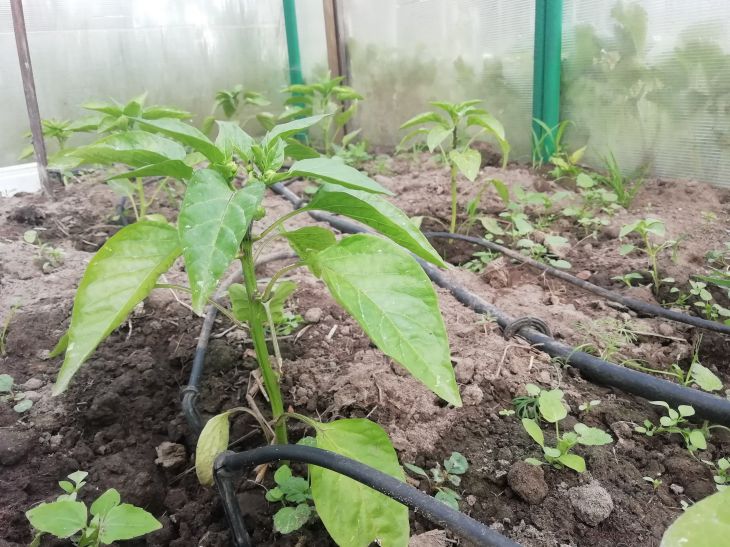Eggplant seedlings - top 7 secrets of planting in a greenhouse that many people don't know about
Eggplant is an extremely beautiful, but very capricious plant. They need light and warmth, but they also do not like overheating, drafts are unacceptable.
The watering regime should also be thorough: eggplants are easily moistened and "dry out" excessively. In addition, eggplants cannot be grown exclusively in open ground; at least part of the cultivation must be done in greenhouses.
In addition, eggplants are often grown from seedlings, because from the first shoots to the appearance of flowers they need about 100 days.
Now varieties have been developed that grow quite well in the middle zone, provided that all the rules are followed and a greenhouse or balcony/veranda is available.
It is better to take such varieties as "Bourgeois", "Vera", "Banana", "Bychy Front", "Gribnoe Ploshchad", "Sanchopantza". These varieties are characterized by rapid ripening, abundant harvest and tasty fruits. They are suitable for open areas and, if all the rules are followed, will not cause unnecessary trouble.

How to Grow Eggplants from Seeds
Eggplant seeds are stored at a temperature of about 10 degrees in a dry place. If all conditions are met, they can retain their properties for up to 4 years. Minus temperatures, even short-term, kill the seeds.
Without special treatment, eggplant seeds germinate only after 2-3 weeks. Since growth and development, depending on the variety, can reach 170 days, it is better to speed up germination.
To do this, you first need to sort through the seeds, removing all deformed and small specimens, and then disinfect them in a strong solution of potassium permanganate for about 20 minutes.
Afterwards, the seeds are washed with clean, first cold and then hot water. After that, they are soaked again, but this time in a nutrient solution. In a liter of water, 1 teaspoon is diluted. The "ideal" fertilizer is wood ash or nitrophoska. The seeds are placed in the solution in a canvas bag for a day. Then they are washed again and for germinating, the seeds are placed on a damp substrate.
At a temperature of 25 degrees, the seeds are kept until they hatch, the substrate must remain moist. If planting in open ground is planned, then hardening is also assumed.
To do this, the swollen seeds are kept warm during the day - about 20 degrees, and at night they are placed in the refrigerator (where the temperature is about 4-5 degrees). This regime should be observed for 3-5 days.
For greenhouse soil, take 2 parts of turf soil and 1 part of humus. Add 1 tablespoon of superphosphate per 1 kg of mixture. Put 50-60 cm of manure and a soil layer of about 15 cm in the greenhouse.
If you plan to grow eggplants at home, it is better to buy a ready-made mixture in the store.
Eggplant is also capricious in terms of transplantation. The root system is poorly restored, which affects growth. Therefore, a wise decision is to grow seedlings in peat bags. In this case, it would be better to prepare the following mixture: for 8 parts of humus, take 2 parts of soil, 1 part of mullein and 1 teaspoon of superphosphate, potassium salt and urea.
To get an early harvest, you need to determine the planting time correctly. If you plan to grow in an unheated greenhouse or under film, the planting period is from early to mid-February. Seeds can be sown in March and planted in the intended place a couple of months later. The main thing is to have time to sow the seeds before April, otherwise the eggplants will bloom too late and will not have time to ripen.
When growing indoors, it is better to take dwarf varieties. By mid-February, the seedlings should already be strong, the stem should be thick. There should be 5-6 leaves. The pot should be large enough. It is best to water them in the evening. Pollination with a brush may be required.
